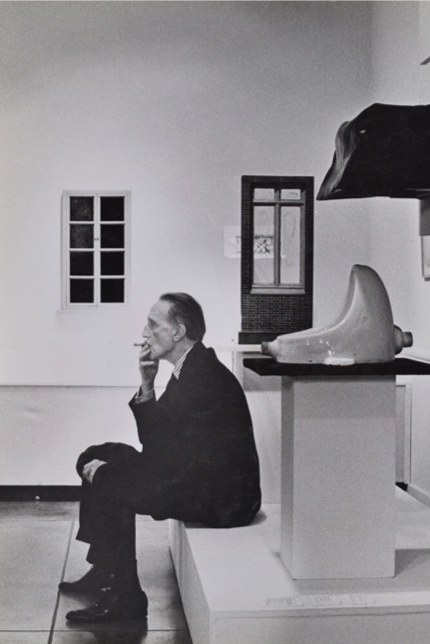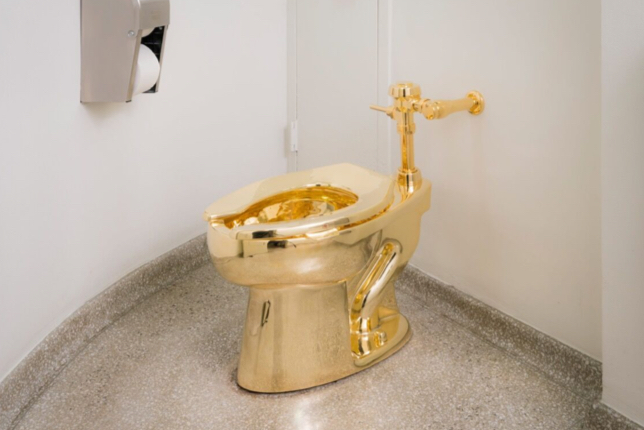
How A Urinal Changed Art History: The Duchamp Fountain
On April 9th, 1917, the trajectory of the history of art changed forever. Just over a century ago, Henri-Robert-Marcel Duchamp (of French origin), perverted the course of the 20th century art scene in one controversial act. The story of the Duchamp Fountain is as legendary as the man involved! With Artsper, discover the tale of how one single urinal profoundly changed the status quo in the history of art…


The origin of the most controversial work in the world
It all began when Duchamp wanted to submit an artwork in the post-war period to the Society of Independent Artists’ salon in New York. Claiming them to be an “unjuried” Society, Duchamp wanted to test their claim that they would accept any work of art. So on April 9th, 1917, he presented them with an inverted urinal signed and dated “R. Mutt, 1917,” with the title Fountain. The Society’s board rejected Fountain on the grounds of its incredibility as an art piece. Duchamp, who was a member of that board himself, handed in his resignation in protest. He could not be part of an establishment that he saw as unrepentantly conservative. The question was thus posed—What constitutes as art?

What is art?
What is a work of art? Who decides: the artist, observer, buyer or the critic? The age-old dilemma of what art is has come into question since the dawn of art’s first creation. In the words of Leo Tolstoy, “art is the activity by which a person, having experienced an emotion, intentionally transmits it to others.” Thus, art becomes less about the physical object created by the artist and more about the emotion expressed by its observation. This of course is only the view of one Russian writer! No one person can truly say to have found an answer to these questions surrounding the concept of art that is universal—much like is the case for debates surrounding religion.
Regarding Duchamp’s exhibit specifically, artists and intellectuals have surfaced on both sides of the debate. Perhaps the clearest explanation of Fountain’s importance comes from an anonymous editorial. “Whether Mr. Mutt with his own hands made the fountain or not has no importance. He chose it. He took an ordinary article of life, placed it so that its useful significance disappeared under the new title and point of view—created a new thought for that object”.
Duchamp had for years championed the use of “ready mades”: objects already in existence, taken from their everyday contexts and re-considered by artists through the lens of their work. Think Andy Warhol’s Campbell Soup Cans. Or the archetypal “still-life” of the Netherlandish painting tradition of the 16th and 17th centuries. The idea at hand, of art primarily as a concept rather than an object, is what would makes the Fountain arguably the most intellectually captivating and challenging art piece of the 20th century.

Other controversies surrounding art
The influence of the Fountain over the century past its first appearance has been great. Duchamp’s Fountain has spawned myriad offspring and fueled numerous debates. Like any great controversy, it is coated in gossip and mystery. No one really knows the truth behind the story. There have been several theories about how Duchamp came up with the work in the first place. One account has him attributing the work to a female friend who sent him the urinal under the male pseudonym “R. Mutt”.
However, trying to establish the true authorship of the fountain is exactly the kind of speculative enterprise of which Duchamp would have disapproved. It should be remembered that in the first instance, Monsieur Duchamp took a urinal, flipped it over, signed it “R. Mutt” and submitted it to a salon; the search for truth and accuracy was decidedly not his first ambition in his process. On the contrary, the unanswered questions that the Fountain has raised are precisely what has contributed to his enduring legacy.
Spin offs of the infamous Duchamp urinal
The reverberations from this moment in art history are still felt today. Contemporary artists continue to be inspired by Duchamp. Among them is contemporary artist Mike Bidlo, with his Fractured Fountain (Not Duchamp Fountain 1917) (2015). Produced as an edition of eight works that directly reference Duchamp’s original, Bidlo’s version is a handcrafted porcelain copy that he then fractured, rebuilt and cast in bronze.

In Bidlo’s work one is reminded of the cracks allowed in classical celadon pottery, supposedly to enhance its aesthetic value. Or of the ancient Japanese tradition of Kintsugi. Or even of the Roman practice of making marble copies of the magnificent Greek bronzes intended to be cast to make weapons for the Empire. However these examples relate to techniques used to improve the utility or aesthetic value of a piece of work. Instead, Bidlo’s work follows Duchamp’s example by depriving his object of its beauty and utility, but emphasizing its artistic value.
Another artist inspired by Duchamp is Maurizio Cattelan in his piece of toilet entitled, America, 2016, exhibited at the Solomon R. Guggenheim Museum. The piece caused mass-controversy as its title denoted a signification orchestrated by the artist that America’s worth equated to that of a gold toilet.

What unites the artists that have riffed on Duchamp across the century is not only that they recognize the value of the questions he raised, but also that they interpret Duchamp’s disruptive nature towards the art world as the way forward. As such, Duchamp can be seen as a martyr for artistic militancy in generations that have preceded him.
The legacy of the iconic urinal
The confusing and baffling nature of this tale is only furthered by the fact no one knows where the original artwork is! But does this matter? What matters more is the effect it had on the world. We only have 17 copies that Duchamp created in the 1960s.The indeterminate origins of the Fountain only add to its many layers and complexities. The art world loves a mystery!
While the origins and meaning intended of the Fountain remain elusive, it has provided countless artists with a launch pad for a revolutionary reexamining of the concept of art in the twentieth century and beyond, stressing the definition of art itself as a subject up for debate.

About Artsper
Founded in 2013, Artsper is an online marketplace for contemporary art. Partnering with 1,800 professional art galleries around the world, it makes discovering and acquiring art accessible to all.
Learn more













